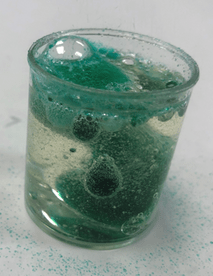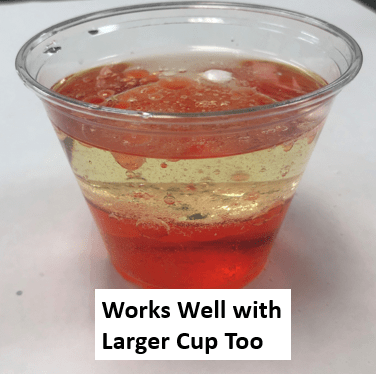The Lava Lamp STEM Challenge
The Lava Lamp is still cool after over half a century. Invented by Edward Craven Walker in 1963, these now famous relics became a 60’s symbol of anything mind-altering or psychedelic.
From a science perspective, a lava lamp is a liquid motion lamp that combines two (or more) liquids that are insoluble in one another. For example, oil and water will not dissolve in each other. In other words, oil and water don’t mix. In order to make a good lava lamp, you normally need two liquids that are much closer in density than oil and water are. As a result, lava lamps usually use water for one liquid and then a mix of mineral oil, paraffin wax, and carbon tetrachloride for the other.
To get the liquids flowing in the lamp in a funky manner, you apply heat to the bottom of the mixture using an incandescent light bulb. As the heavier liquid absorbs the heat, it expands and becomes less dense. The now lighter liquid rises to the top where it quickly cools, becomes more dense, and sinks back down to the bottom. This mesmerizing cyclical motion repeats until the plug is pulled.
In this STEM Challenge, your initial task is to build a mini-lava lamp that uses Alka-Seltzer, rather than a light bulb, to power the motion of the lamp. Once constructed, your design task is to improve the groove of your Lava lamp – find at least one way that you make it hipper than it was before.


Lava Lamp SC Resources:
Lava Lamp SC Lesson Plan w vocab
Lava Lamp Student Sheet
Lava Lamps are Groovy
Content Focus: matter, solids, liquids, gases, physical change, chemical change, density
